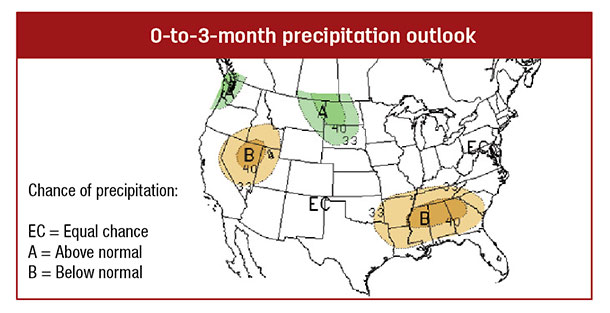As many enjoy these good conditions, it is important to take inventory of the cow herd and current feed resources.
If it hasn’t already been done, now is the time to evaluate the body condition score of cows in your herd so appropriate feeding changes can be implemented to ensure cows are in optimum body condition prior to calving in the spring.
Two and 3-year-old females should be in a body condition score of 6 or greater at calving, and those females 4 and older should be in a condition score of 5 or greater at calving.
November is an excellent time to treat cows for lice. Lice can reduce appetite and significantly lower red blood cell counts of cattle, leading to severe performance losses. Pour-on insecticides and anthelmintics provide an effective approach to kill both biting and blood-sucking lice.
StandGuard pour-on insecticide and the pour-on anthelmintics (e.g., Cydectin, Eprinex, Dectomax) only require one treatment for control.

In contrast, most other pour-on products require two treatments spaced two to three weeks apart to break the life season. It is important to treat every animal in the herd; if not, the untreated animals can quickly re-infest the herd.
Effective strategies for internal parasite control will vary greatly across Texas, Oklahoma and Kansas. In the higher-rainfall areas of these states, a November/December treatment may be beneficial for cow-calf producers.
Additionally, stocker cattle and replacement heifers should be treated prior to turnout on winter annual pastures.
November is a time that may require some changes in a mineral supplementation program. A moderate or high-magnesium mineral (about 5 to 10 percent magnesium) should be provided to cows grazing winter annual grasses like wheat, ryegrass and others to help prevent potential problems with grass tetany.
Good consistent consumption of the mineral is more important than the amount of magnesium in the supplement. Grass tetany is not a problem in stocker cattle; however, inadequate calcium in the diet can limit the performance of stocker cattle and replacement heifers grazing winter forages.
Providing at least an additional 10 grams of calcium per day through either a high-calcium mineral supplement or some other supplement can significantly increase average daily gain. ![]()

-
Jason Banta
- Associate Professor and Extension Beef Cattle Specialis
- Texas A&M University
- Email Jason Banta







